Fast App: Bringing Rapid Prototyping In-House with Stratasys Fortus 3D Improves Product Design for Medical Device Maker
Latest News
February 1, 2010
By DE Editors
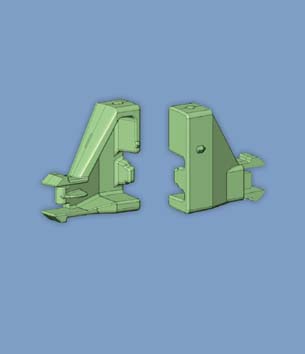 Figure 1. Shown here are interior and exterior views of a male snap-fit component Spacelabs designed for cable management. (Courtesy of Stratasys.) |
Spacelabs Healthcare shortened prototype turnaround and the time it took to bring new products to market by adopting the FDM process and deploying Stratasys’s Fortus 3D Production System.
Real Challenge
Spacelabs Healthcare is a pioneer in the field of patient monitoring devices and has a reputation for its technology being high quality, intuitive, and user friendly. The equipment is used to monitor patient vital signs, including heartbeat, blood pressure, and oxygen levels. Besides monitoring and connectivity systems, the company manufactures equipment for anesthesia delivery and ventilation, as well as diagnostic cardiology.
For any manufacturer, both component and manufacturing costs are important to control during the design phase. Rapid prototyping provides a quick way to test designs long before manufacturing costs can soar. In the past, Spacelabs either machined prototypes in-house or outsourced them to rapid prototyping service bureaus that created stereo-lithography, laser sintered, or fused deposition modeling (FDM) parts. A recent move to in-house rapid prototyping at Spacelabs has yielded numerous benefits, including boosting engineers’ capacity to innovate. By having a Fortus machine at their disposal, they’re free to explore more ideas and prove them out before going to tooling. Fortus uses the FDM process.
Real Solution
“There’s real value having the machine in house, because with it, we can actually build and test every design idea,” says Spacelabs lead mechanical engineer Jim Dahl. “In the past, we would create fewer design ideas and then choose which two or three to outsource and build. Then we would pick the best one we got back. Now, we literally build every idea and truly choose the best one for the final design. It helps us create better quality end products.”
Recently, Spacelabs enhanced the cabinet design of their telemetry receiver housing. Originally, the device simply had holes in the fascia from which cables extended. The new design includes snap-fit components that serve two functions. First, it’s a cosmetic device, a hole plug that makes the look aesthetically appealing and organized. In this way it acts as a high-class grommet allowing the cables to protrude neatly.
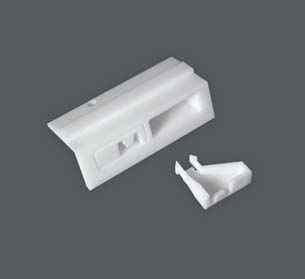 Figure 2. This is the FDM prototype of the male Method Cost and female components for the snap fit. (Courtesy of Stratasys.) | 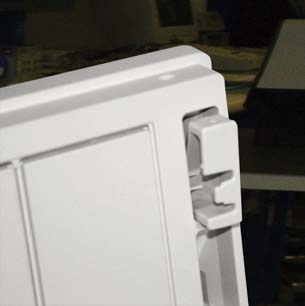 Figure 3. Production components are made via injection molding. The product is a telemetry unit that receives signals from vital-sign-monitoring equipment. (Courtesy of Stratasys.) |
The snap fit’s other function is to allow the user to secure the protruding cables at a specific length. To accomplish this, the user slides the cable to one side of the grommet, pulls the cable to the required length, and slides the cable back into a groove to lock it back into place.
“Having the FDM system in-house has been extremely valuable in both time and costs,” says Dahl. “The biggest benefit for us is the ability to have quick-turnaround on prototypes. We’ve literally gone from weeks to a matter of hours per component.” This translates to getting new products to market faster. Outsourcing each round of snap-fit prototypes would have taken over two weeks and cost an estimated $300 per iteration. Using FDM, it took Spacelabs only about 10 hours to produce the part, using the highest-resolution settings. Cost was about $30 for materials.
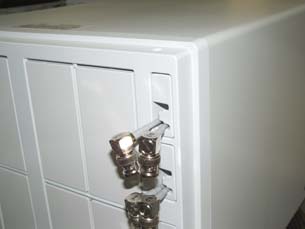 Figure 4. The snap fit allows a cable to be drawn out to a desired length and then locked in place. (Courtesy of Stratasys.) | 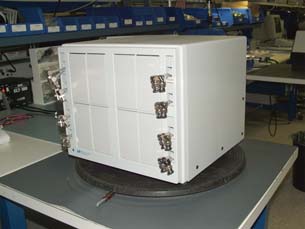 Figure 5. Besides securing eight pairs of cables, the snap fit connectors allow the cables to be organized and neat in appearance. (Courtesy of Stratasys.) |
“Turn-around time is key in any business, but that’s especially true in the medical-device market,” says Dahl. Companies must continue to drive their designs forward, or they begin to lag behind the competition.
An unexpected use of the prototyping system is that engineers can create plastic parts and metal plate them to represent metal components that may adversely affect wireless performance. This is more efficient than machining the components from metal.
How Did FDM Compare to Traditional Prototyping Methods for Spacelabs?
|
Dahl says they have found their Fortus machine capable of producing both the level of surface finish and the fine feature details they need. “We’re able to validate changes in design features, part fits, and function,” he says. “So now we can evaluate the design long before spending money on tooling.”
“When we put together the justification for purchasing the ]Fortus machine], our ROI figures indicated that the system payback would be in the one and a half to two-year bracket,” says Dahl. “At the time, that was reason enough to purchase the machine. Ultimately, though, the ]Fortus] machine paid for itself in a little over a year. We don’t leave it idle for long.”
More Info
Spacelabs Healthcare
Subscribe to our FREE magazine, FREE email newsletters or both!
Latest News
About the Author
DE’s editors contribute news and new product announcements to Digital Engineering.
Press releases may be sent to them via [email protected].






